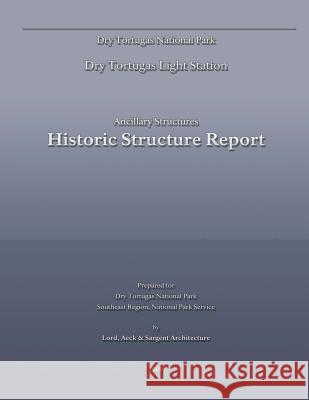Dry Tortugas Light Station - Ancillary Structures Historic Structure Report » książka
Dry Tortugas Light Station - Ancillary Structures Historic Structure Report
ISBN-13: 9781482319163 / Angielski / Miękka / 2013 / 140 str.
Dry Tortugas Light Station - Ancillary Structures Historic Structure Report
ISBN-13: 9781482319163 / Angielski / Miękka / 2013 / 140 str.
(netto: 92,45 VAT: 5%)
Najniższa cena z 30 dni: 96,27
ok. 16-18 dni roboczych
Bez gwarancji dostawy przed świętami
Darmowa dostawa!
The Ancillary Structures of the Dry Tortugas Light Station were built to accommodate the Light Keeper's, their families and the equipment and supplies necessary to maintain the Lighthouse and support habitation in this remote location. The Light Station was originally constructed during a period of transition and significant growth within the Lighthouse Establishment. As a result of hurricanes and fire several of the original support buildings were destroyed. At various periods, advancements in technology and the need to modernize the Light Station have led to the site through the NPS's Volunteer-In-Parks (VIP) modification of original structures and the addition of new facilities. The Light Station was manned by keepers or caretakers from its initial construction through the mid-1980s when it was transferred from the U.S. Coast Guard (USCG) to the National Park Service (NPS). At this time, the lamp or lighthouse optic was automated, eliminating the need for continual occupation of the site. Under the Park Service's management, public visitation to the Key has been limited however a relatively constant presence has been maintained at the program and various research initiatives. In October 2008, Lord, Aeck & Sargent was contracted by the National Park Service to prepare a Historic Structure Report (HSR) for the resources of the Dry Tortugas Light Station. It was decided that three documents would be prepared, the first would address the Lighthouse and Oil House, the second, the Keeper's Residence and the last document would address the remaining Ancillary Structures of the Light Station. This document addresses the Ancillary Structures, including the Kitchen Building, Brick Cisterns, Boat House, New Oil House, Concrete Cisterns, and Concrete Walkways. During the first week of March 2009, a two member team from Lord, Aeck & Sargent traveled to Loggerhead Key to undertake a physical inspection of the Light Station resources. In addition, Ms. Dorothy Krotzer of Building Conservation Associates also traveled to the site to collect mortar and paint samples for analysis. Personnel from Lord, Aeck & Sargent spent a week on the island documenting the resources and collecting information to support preparation of the HSRs. A second brief visit was made to the site in June 2009. Field notes, measurements, material sampling and photographs were collected for all of the structures as a means to record the existing conditions. With the exception of the mortar and paint sampling, no destructive testing was performed and no historic fabric was removed to facilitate the collection of information. All portions of the buildings were accessible with the exception of the Lighthouse galleries. A hurricane-proof plywood insert had been installed at the Watch Room level door, restricting access to the galleries. Loggerhead Key and the resources of the Dry Tortugas Light Station (with the exception of the Lighthouse) were transferred to the National Park Service in 1992 when Dry Tortugas National Park was established. Current agreements call for transfer of the Lighthouse to the National Park Service in the near future, pending the fulfillment of several requirements, including completion of this report. Upon official transfer of the Lighthouse, the structure will remain an active aid to navigation and the USCG will retain management and maintenance responsibilities for the optic and its associated equipment. The Park's General Management Plan has addressed treatment and use of the Light Station resources through the establishment of a Historic Preservation/Adaptive Use Management Zone in the center of Loggerhead Key. This management zone prescribes that the resource of the Light Station will be primarily reserved for interpretive and educational opportunities. The structures will also be adaptively used to accommodate critical functions such as housing for volunteers, staff and research personnel and the storage of utility components and equipment.
Zawartość książki może nie spełniać oczekiwań – reklamacje nie obejmują treści, która mogła nie być redakcyjnie ani merytorycznie opracowana.











